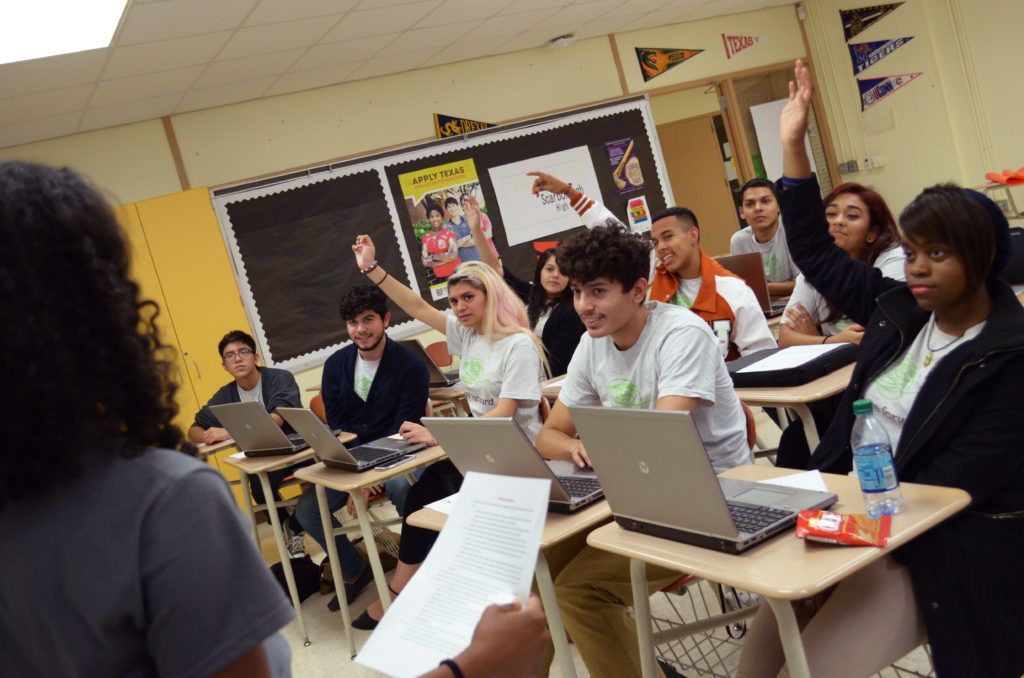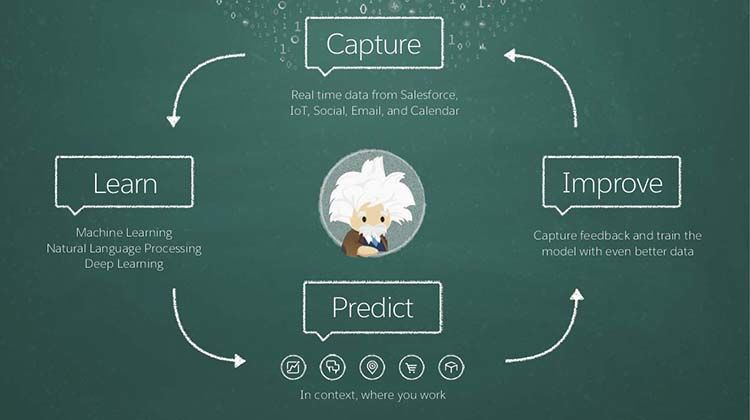Adding Artificial Intelligence:
A Smart Move

Nonprofits are typically slow to adopt new technologies. Here’s why they shouldn’t shy away from AI
American businesses and consumers continue to ride the tech train, buying up every new digital device and program that come to the market, and then melding those innovative new tools into their lives and workplaces. But one group has been reluctant to hop aboard: the charitable sector.
Even though 85 percent of Americans already use mobile apps and other innovations powered by artificial intelligence, nonprofit groups remain notoriously slow at adopting AI tools that could make them more time- and cost-efficient. The perceived high costs of AI, along with privacy issues and the individual way each charitable organization has traditionally collected and used its data, has kept many from upgrading.
But, one by one, reasons for those fears are disappearing, say the leaders of organizations that currently benefit from artificial intelligence programs.
Creating Efficiencies

AI tech is becoming cheaper, thanks to companies like Salesforce.org that offer products with subscriptions at greatly-reduced prices. Improvements in algorithms and security have made the new tools safer and freer from bias against certain groups. And because new digital platforms are flexible enough to fit a variety of organizational data sets, AI is easier to use than ever.
The efficiencies AI can create for groups make it a perfect fit for cost-conscious nonprofits, charity managers say. The time to invest in technologies — such as chatbots that improve client service, or algorithms that scan data for the best donor prospects — is now.
“It’s time for people to get over their fears and realize that AI is a great tool for improving what they do,” says Austin Buchan, chief executive at College Forward, an organization that provides coaching and other support services to 7,000 new first-generation college students each year. “AI is little more than using big data to spot hidden trends and info so we can do our work better.”
College Forward, which works in Texas to stem the tide of college dropouts, partnered with Salesforce.org in 2012 after being awarded a foundation grant to upgrade its technology.
Eventually, Salesforce.org and College Forward took the information the organization had compiled on students and reconfigured it into an AI-supercharged student-services database. The group recently added another company product — the Einstein Prediction Builder — that analyzes data and predicts which students might be at risk for leaving school.

Salesforce Einstein Prediction Builder makes it possible for nonprofits to predict outcomes for their donors, program participants, and other constituents.
Salesforce Einstein Prediction Builder makes it possible for nonprofits to predict outcomes for their donors, program participants, and other constituents.
“It means we can point and click within the Salesforce platform,” says Buchan. “It’s so much easier.”
The results have sharpened the group’s vision of who its students are and what they need. Algorithms now flag students who need interventions more accurately and much faster than human efforts can, Buchan adds, while improving the organization’s ability to find more students to bring into its programs.
“AI has multiplied our impact by a factor of 10 — something that simply couldn’t be done if we used the typical nonprofit playbook,” says Buchan, adding that organizations, like for-profit businesses can’t reach millions of customers without AI.
Beyond scalability, AI helps groups improve what they do. “We owe this new level of sophistication to the homeless or to veterans or to whoever it is we’re trying to serve,” Buchan adds.
College Forward has gone one step further with its AI, creating its own app — called CoPilot — that dozens of partner organizations serving 400,000 students now use. Beyond expanding College Forward’s mission to include like-minded groups, CoPilot earns the College Forward around $1 million in licensing fees each year.
Creating Better Experiences

For other groups, AI represents a way to better use sometimes-limited resources.
“We let the machines do the heavy lifting with all our small stuff,” says Michael Grandel, director of business intelligence at the National Aquarium. “Computers with AI can do the dumb things — like sorting and sifting through big piles of data — smarter and more efficiently. That allows us to allocate more time for our people to do things they haven’t be able to do before. It helps us add value to our operations.”
The National Aquarium puts AI to work on improving the multifaceted programs it runs for its thousands of members and 1.3 million annual visitors. It has plugged in several AI products from the Salesforce Einstein line, using Einstein Analytics as its linchpin.
The tools help the organization learn which members are donors, and which members are most likely to become donors. It scans AI-generated data for clues as to which groups should receive promotions and targeted messaging, such as environmental calls to action or invitations to certain events.
“We’re continually trying to create a better customer experience,” says Grandel. “The Einstein products help us do that by asking more intelligent questions of our data.
Putting Data to Work for Good

Besides offering super-intelligent products at discounted rates, Salesforce.org can link organizations with free technical assistance and other systems that help groups use their data more wisely.
Salesforce.org connected Reading Partners, an organization that trains tutors to teach children nationwide to read at grade level by fourth grade, with Cloud for Good, an IT services company that works to enhance the capabilities of Salesforce platforms. What’s more, Reading Partners took advantage of a Salesforce team of volunteers to get its AI-centered technology up and running.

Reading Partners, an organization that trains tutors to teach children nationwide to read at grade level by fourth grade.
Reading Partners, an organization that trains tutors to teach children nationwide to read at grade level by fourth grade.
“We’re a data-driven organization that puts data first, so our partnership with Salesforce seems natural,” says Lola McCall, Salesforce administrator at Reading Partners. “We’ve been working together to set up dashboards around our Salesforce database. They’re helping us reach our goals of improving our fundraising, as well as student engagement, performance, and recruitment.”
Preparing for the Transformation
While Reading Partners and other groups have been eager to add the far-reaching capabilities of AI to their mix, many more have not — a sign of the cautiousness that often marks charitable groups.
They disregard AI at their own peril, some argue.
“In a couple of years, your board and staff will be expecting you to be working with AI,” says Nate Marsh, director of business intelligence at SCS Noonan Scholars, a group that works to increase college access and success among college students from underrepresented groups. “One of the fears nonprofit leaders have is that their uses of data are unique to their organization. Their outcomes make sense to them and only them. They fear the standardization that comes with using these new tools. But to move forward, they need to get over that fear.”
Marsh and others recommend that nonprofits take the following steps to shape up their data as they prepare for integrating AI into their operations:
- Make sure that the information that you re-enter from spreadsheets and other legacy tech systems is clean and consistent. Review the material and weed out bad or “dirty” data before plugging them into an AI program.
- Create variables for data in a standardized way so AI tools can customize around them.
- Get your staff involved. AI training isn’t a big challenge, but including the people who will use the technology during the ramp-up will help them understand it more quickly.
- Have firm categories and goals in mind for your information — and use them to push you through the AI installation process.
- Ensure that the data you’re adding is compatible with AI programs that grow and change over the long term.
- Maintain a single platform (such as Salesforce) to track your data.
- Make a long-term plan to protect your data.
Organizations should also make sure that their clients and donors understand why they have chosen to use AI tools.
“There are foundations who might say, ‘Why should my grant money go to Salesforce instead of scholarships?’ And some members of the public think that spending money on a database is something nonprofits shouldn’t be doing,” Buchan says. “There’s a clear case to be made for the advantages of adding AI, and organizations need to make it.
Thanks to advances in technology, machine learning and artificial intelligence are becoming more accessible. But what do these new trends mean for nonprofit fundraising, marketing, and program management?
If you’re curious about new trends that will help advance your mission, Salesforce.org has put together a free e-book that serves as a helpful introduction to what AI is and how your constituents and stakeholders can benefit.
Simply download the e-book using the link below: https://www.salesforce.org/nonprofit/ai-for-good-einstein-ebook-chronicle


SCS Noonan Scholars, a group that works to increase college access and success among college students from underrepresented groups.
SCS Noonan Scholars, a group that works to increase college access and success among college students from underrepresented groups.


